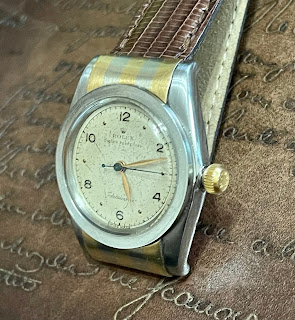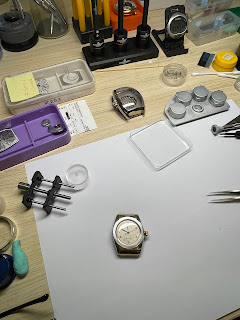The Evolution of Rolex Turn-O-Graph: A Journey Through Time
The Rolex Turn-O-Graph holds a significant place in the history of Rolex watches. It not only marks the birth of the first Rolex tool watch but also introduces the concept of a rotating bezel to the world of horology. In this article, we will take a journey through time, exploring the evolution of the Rolex Turn-O-Graph and its impact on the watch industry.
The Birth of the Rolex Turn-O-Graph
The Rolex Turn-O-Graph made its debut in 1953 with the reference 6202. It was the first serially produced Rolex watch to feature a rotating bezel. This innovative feature allowed wearers to easily track time intervals, making it a practical tool for various activities. The ability to time anything from long-distance calls to automobile races to boiling an egg earned the watch its name, Turn-O-Graph.
## Integration into the Datejust Collection
Following the success of the initial Turn-O-Graph model, Rolex introduced the reference 6309. This model was a part of the Datejust collection and featured a rotating bezel made of the same material as the case. This integration allowed Rolex to differentiate its product categories and prevent competition within its range. The Turn-O-Graph became a more elegant wristwatch option for businessmen, while the Submariner catered to divers.
The Thunderbird Connection
In 1956, Rolex created a special variant of the Turn-O-Graph, known as the reference 6609, to honor the Thunderbirds, a U.S. Air Force squadron known for their aerial demonstrations. This model was based on the 36mm Oyster Case of the Datejust but featured an 18k gold case and a rotating bezel. Rolex offered this new reference to the Thunderbirds, giving it the nickname by which it is best known in the United States.
## The Transition to Reference 1625
Rolex discontinued the reference 6609 in 1959 and replaced it with the reference 1625. This model was produced from 1959 to 1977 and was available in two variants. The first variant featured a two-tone steel and yellow gold construction, similar to its predecessor. The second variant featured a steel case with a white gold bezel, offering a more refined aesthetic.
## Collecting the Rolex Turn-O-Graph
Collecting the Rolex Turn-O-Graph can be a rewarding pursuit for watch enthusiasts. The four main references, including the 6202, 6309, 6609, and 1625, represent different milestones in the evolution of this iconic timepiece. Each reference has its own unique characteristics and design elements that make it desirable to collectors.
The reference 6202 holds historical significance as the first Rolex tool watch with a rotating bezel. Its rarity and pioneering status make it a highly sought-after piece. The reference 6309, on the other hand, showcases the integration of the Turn-O-Graph into the Datejust collection, offering a more refined and elegant look.
The reference 6609, with its 18k gold case and connection to the Thunderbirds, carries a special charm and is often referred to by its nickname. Lastly, the reference 1625, available in two-tone steel and yellow gold or steel with a white gold bezel, offers a unique combination of elegance and sportiness.
Conclusion
The Rolex Turn-O-Graph has left an indelible mark on the world of horology. From its humble beginnings as the first Rolex tool watch with a rotating bezel to its integration into the prestigious Datejust collection, the Turn-O-Graph has evolved and adapted to the changing tastes and demands of watch enthusiasts.
Whether you are captivated by the historical significance of the reference 6202, the elegance of the reference 6309, the connection to the Thunderbirds with the reference 6609, or the unique design of the reference 1625, collecting the Rolex Turn-O-Graph is a journey that spans decades and showcases the mastery of Rolex craftsmanship.
Embrace the legacy of the Rolex Turn-O-Graph and embark on your own quest to collect these remarkable timepieces. Each reference tells a story and represents a milestone in the evolution of Rolex watches. Let the Turn-O-Graph be a symbol of your passion for horology and a testament to the enduring legacy of Rolex.The Rolex ref 1625 Turn O Graph is often called Thunderbird by some collectors. In Hong Kong, it is called 爬山虎. Most of the ref 1625 is in steel with yellow gold or white gold bezel. There is also 18k version. In the past, my preference has been with steel watches but these few years, I have started to collect more solid gold watches as they are rarer and the overall conditions tend to be better.

























































